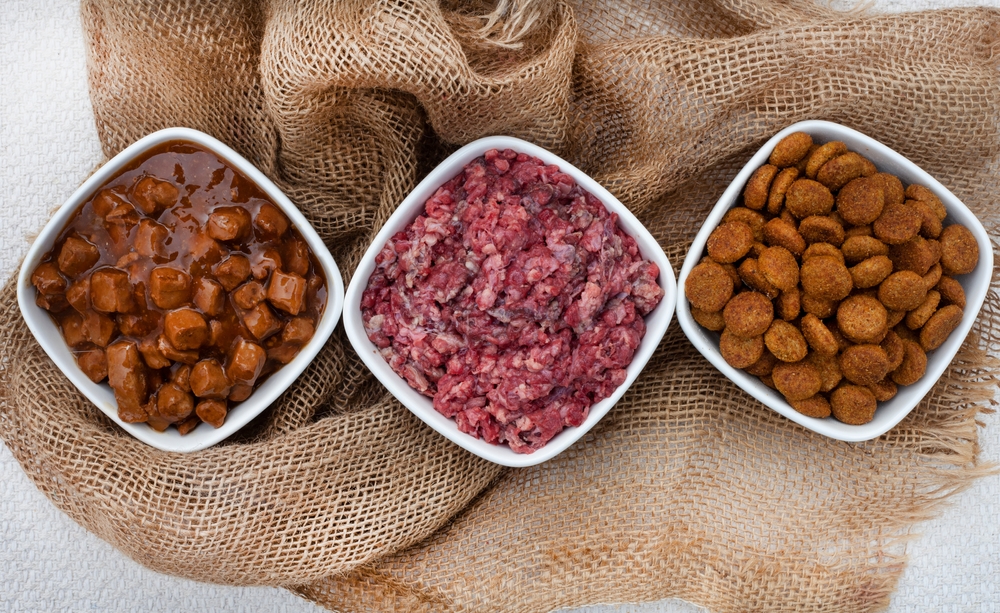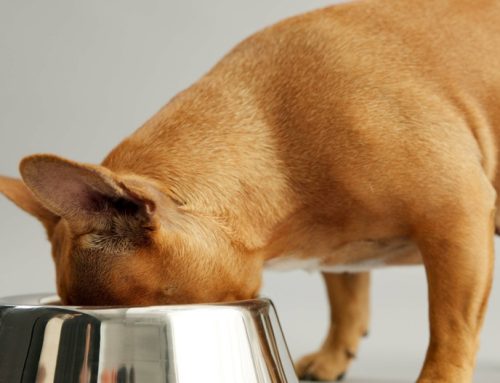Understanding pet food labels can feel like deciphering a foreign language, especially when all you want to do is provide your pet with the best nutrition. At Companion Care Animal Clinic, we know many pet owners are puzzled by these labels and the meaning of all those ingredients and numbers.
When it comes to your pet’s health, what they eat plays a significant role. Not all pet foods are created equal, so you need to understand the label to know what you’re feeding your pet. A nutrition label typically includes:
- Ingredients list
- Calorie content
- Feeding guidelines
- Guaranteed analysis
- AAFCO statement
- Expiration or best-by date
Understanding your pet’s ingredients list
When you pick up a bag of pet food, the ingredients list should be the first thing you check—for good reason. Ingredients are listed in descending order by weight, meaning the first few ingredients make up most of the food. So, if a meat, such as chicken, beef, and lamb, tops the list, that’s good. Named meats indicate real, high-quality proteins.
Pet food calorie content
Tracking your pet’s weight and daily calorie intake, including treats and wet food, is important to ensure you manage their weight and provide adequate energy. Calorie content, often shown as kilocalories (i.e., “kcals”) per kilogram and per serving size (e.g., a cup, can, or treat), notes the energy amount according to the food.
Feeding guidelines for pets
Pet food labels provide feeding guidelines that help determine the appropriate portion size for your pet rather than what they likely beg for. These recommendations are usually based on average activity level, weight, and life stage. For a customized feeding plan for your pet, do not hesitate to consult with our veterinarian.
Guaranteed analysis in pet nutrition
The guaranteed analysis is a snapshot of the nutritional content, detailing the amounts of crude protein, fat, fiber, and moisture. The values, which will vary depending on whether the food is wet or dry, confirm the pet food meets dietary standards.
Pet food with the AAFCO statement
Look for the Association of American Feed Control Officials (AAFCO) statement on the label. This indicates whether the food meets nutritional levels for a specific life stage, such as growth for puppies or maintenance for adults. A pet food with the AAFCO seal of approval has been tested and shown to be nutritionally adequate for your pet’s specific life stage.
Expiration or best-by date on pet food
Similar to the “best by” or “use by” dates that come with people’s groceries, dog food also features a freshness date, which denotes the period during which the food maintains its highest quality and nutritional benefits. After that, the food may lose potency and flavor, affecting its overall value.
Key terms on pet food labels

- Natural — This indicates the food is free of artificial colors, flavors, and preservatives and the ingredients are sourced solely from plants, animals, or minerals.
- Organic — Similar to organic human food, pet food noted as organic signifies compliance with the USDA’s National Organic Program (NOP) standards for production and handling. Such food must contain a minimum 95% organic ingredients.
- Meals — A pet food label that refers to a “meal” (e.g., beef meal, poultry meal) on pet food labels means that the food contains proteins that have been obtained from animal parts not usually sold for human consumption. These parts, such as leftover meat, are processed into protein powder.
- Human-grade — This grade indicates that the pet food meets the Food and Drug Administration’s (FDA) safety and quality standards for human food. The label may also meet the approval of the United States Department of Agriculture (USDA).
- By-products — In pet food, these usually consist of organs, such as the kidneys, liver, spleen, lungs, and trimmings, left over after human food has been processed.
Companion Care Animal Clinic will recommend the best food for your pet based on their age, breed, health conditions, and activity level. Once you select a food, watch your pet for a few weeks, checking their coat condition, energy level, and overall health. If they seem happy and healthy, you’ve likely chosen a good match. On the other hand, if you notice any adverse reactions, you probably should try a different diet or consult our veterinarian again.
Choosing the right pet food and deciphering nutrition labels may seem daunting, but when you know what to look for, can separate the important information from the marketing claims, and know our veterinary team is available for education and advice, you can make better choices for your pet.
If you have questions about your pet’s diet or need personalized recommendations, schedule an appointment with our knowledgeable team. We’re here to help you navigate the complexities of pet nutrition to keep your pet feeling their best.







Leave A Comment